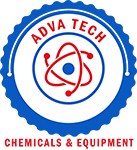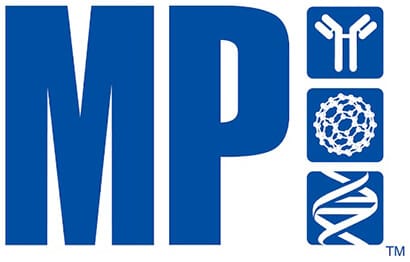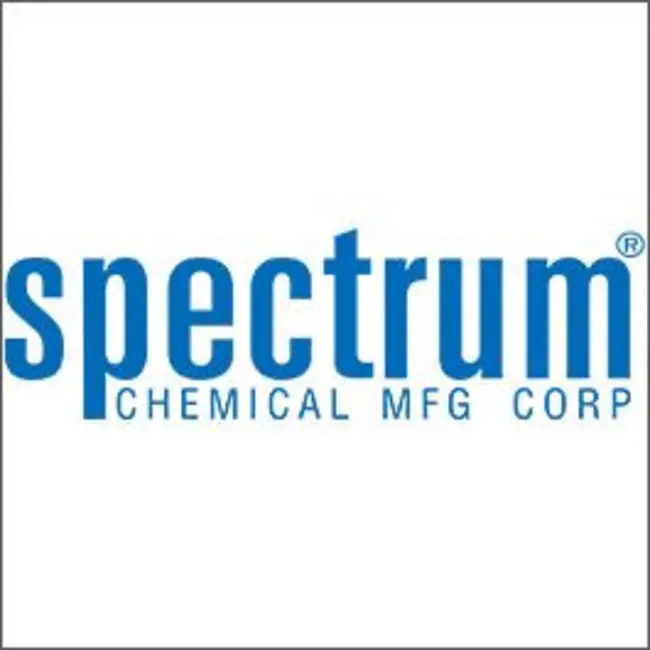GenScript Biotech
Showing 2051–2100 of 2554 results
-
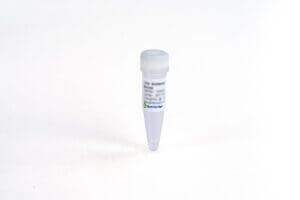
PSA (8A12), mAb, Mouse
$8,883.75 Add to cart View Product DetailsProstate specific antigen (PSA) is a serine protease produced by the prostate gland. In serum, it exists in different forms, cPSA, mainly including PSA-ACT (alpha-1-antichymotrypsin) and PSA-A2M (alpha-2-macroglobulin), fPSA (free PSA), etc. The blood level of PSA is increased in men with prostate cancer and it is considered as an indicator for prostate cancer, tumor recurrence and response to therapy.
-

PSA Antibody (8A9B8), mAb, Mouse
$168.19 Add to cart View Product DetailsPSA monoclonal antibodies (5B10D4, 8A9B8, 1G9G8, 4A5D10 and 1A7D4) recognize total PSA, freePSA and ACT- PSA Complex (Prostate Specific Antigen / a-1 Antichymotrypsin Complex).
-

PSA Antibody (8A9B8), mAb, Mouse
$694.31 Add to cart View Product DetailsPSA monoclonal antibodies (5B10D4, 8A9B8, 1G9G8, 4A5D10 and 1A7D4) recognize total PSA, freePSA and ACT- PSA Complex (Prostate Specific Antigen / a-1 Antichymotrypsin Complex).
-

PSMA Fc Chimera, Human
$1,725.00 Add to cart View Product DetailsProstate-specific membrane antigen (PSMA) also known as Folate hydrolase 1 (FOLH1), Folylpoly-gamma-glutamate carboxypeptidase (FGCP), Glutamate carboxypeptidase 2 (GCP2), N-acetylated-alpha-linked acidic dipeptidase I (NAALAD1), is a type II membrane glycoprotein that is expressed in prostate tissue and to a lesser extent in the peripheral and central nervous system, small intestinal, and salivary gland tissues. PSMA has both folate hydrolase and N-acetylated-alpha-linked-acidic dipeptidase (NAALADase) activity and has a preference for tri-alpha-glutamate peptides. The catalytic activity of PSMA involves the release of unsubstituted C-terminal glutamyl residues, typically from Ac-Asp-Glu or folylpoly-gamma-glutamates. PSMA is used as a diagnostic and prognostic indicator of prostate cancer, and as a possible marker for various neurological disorders such as schizophrenia, Alzheimer’s disease, and Huntington’s disease.
-

PSMA Fc Chimera, Human
$258.75 Add to cart View Product DetailsProstate-specific membrane antigen (PSMA) also known as Folate hydrolase 1 (FOLH1), Folylpoly-gamma-glutamate carboxypeptidase (FGCP), Glutamate carboxypeptidase 2 (GCP2), N-acetylated-alpha-linked acidic dipeptidase I (NAALAD1), is a type II membrane glycoprotein that is expressed in prostate tissue and to a lesser extent in the peripheral and central nervous system, small intestinal, and salivary gland tissues. PSMA has both folate hydrolase and N-acetylated-alpha-linked-acidic dipeptidase (NAALADase) activity and has a preference for tri-alpha-glutamate peptides. The catalytic activity of PSMA involves the release of unsubstituted C-terminal glutamyl residues, typically from Ac-Asp-Glu or folylpoly-gamma-glutamates. PSMA is used as a diagnostic and prognostic indicator of prostate cancer, and as a possible marker for various neurological disorders such as schizophrenia, Alzheimer’s disease, and Huntington’s disease.
-

PSMA Fc Chimera, Human
$185.44 Add to cart View Product DetailsProstate-specific membrane antigen (PSMA) also known as Folate hydrolase 1 (FOLH1), Folylpoly-gamma-glutamate carboxypeptidase (FGCP), Glutamate carboxypeptidase 2 (GCP2), N-acetylated-alpha-linked acidic dipeptidase I (NAALAD1), is a type II membrane glycoprotein that is expressed in prostate tissue and to a lesser extent in the peripheral and central nervous system, small intestinal, and salivary gland tissues. PSMA has both folate hydrolase and N-acetylated-alpha-linked-acidic dipeptidase (NAALADase) activity and has a preference for tri-alpha-glutamate peptides. The catalytic activity of PSMA involves the release of unsubstituted C-terminal glutamyl residues, typically from Ac-Asp-Glu or folylpoly-gamma-glutamates. PSMA is used as a diagnostic and prognostic indicator of prostate cancer, and as a possible marker for various neurological disorders such as schizophrenia, Alzheimer’s disease, and Huntington’s disease.
-

PSMA, His, Human
$1,552.50 Add to cart View Product DetailsProstate-specific membrane antigen (PSMA) also known as Folate hydrolase 1 (FOLH1), Folylpoly-gamma-glutamate carboxypeptidase (FGCP), Glutamate carboxypeptidase 2 (GCP2), N-acetylated-alpha-linked acidic dipeptidase I (NAALAD1), is a type II membrane glycoprotein that is expressed in prostate tissue and to a lesser extent in the peripheral and central nervous system, small intestinal, and salivary gland tissues. PSMA has both folate hydrolase and N-acetylated-alpha-linked-acidic dipeptidase (NAALADase) activity and has a preference for tri-alpha-glutamate peptides. The catalytic activity of PSMA involves the release of unsubstituted C-terminal glutamyl residues, typically from Ac-Asp-Glu or folylpoly-gamma-glutamates. PSMA is used as a diagnostic and prognostic indicator of prostate cancer, and as a possible marker for various neurological disorders such as schizophrenia, Alzheimer’s disease, and Huntington’s disease.
-

PSMA, His, Human
$232.88 Add to cart View Product DetailsProstate-specific membrane antigen (PSMA) also known as Folate hydrolase 1 (FOLH1), Folylpoly-gamma-glutamate carboxypeptidase (FGCP), Glutamate carboxypeptidase 2 (GCP2), N-acetylated-alpha-linked acidic dipeptidase I (NAALAD1), is a type II membrane glycoprotein that is expressed in prostate tissue and to a lesser extent in the peripheral and central nervous system, small intestinal, and salivary gland tissues. PSMA has both folate hydrolase and N-acetylated-alpha-linked-acidic dipeptidase (NAALADase) activity and has a preference for tri-alpha-glutamate peptides. The catalytic activity of PSMA involves the release of unsubstituted C-terminal glutamyl residues, typically from Ac-Asp-Glu or folylpoly-gamma-glutamates. PSMA is used as a diagnostic and prognostic indicator of prostate cancer, and as a possible marker for various neurological disorders such as schizophrenia, Alzheimer’s disease, and Huntington’s disease.
-

PSMA, His, Human
$168.19 Add to cart View Product DetailsProstate-specific membrane antigen (PSMA) also known as Folate hydrolase 1 (FOLH1), Folylpoly-gamma-glutamate carboxypeptidase (FGCP), Glutamate carboxypeptidase 2 (GCP2), N-acetylated-alpha-linked acidic dipeptidase I (NAALAD1), is a type II membrane glycoprotein that is expressed in prostate tissue and to a lesser extent in the peripheral and central nervous system, small intestinal, and salivary gland tissues. PSMA has both folate hydrolase and N-acetylated-alpha-linked-acidic dipeptidase (NAALADase) activity and has a preference for tri-alpha-glutamate peptides. The catalytic activity of PSMA involves the release of unsubstituted C-terminal glutamyl residues, typically from Ac-Asp-Glu or folylpoly-gamma-glutamates. PSMA is used as a diagnostic and prognostic indicator of prostate cancer, and as a possible marker for various neurological disorders such as schizophrenia, Alzheimer’s disease, and Huntington’s disease.
-
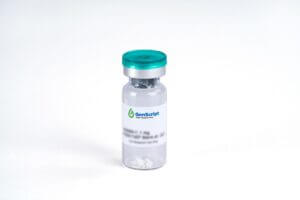
PTH (1-84aa), Human
$819.38 Add to cart View Product DetailsParathyroid Hormone (PTH) is the most important endocrine regulator of calcium and phosphorus con- centration in extracellular fluid. Parathyroid Hormone (PTH) is secreted from cells of the parathyroid glands and finds Parathyroid Hormone’s major target cells in bone and kidney. Like most other protein hormones, Parathyroid Hormone (PTH) is synthesized as a preprohormone. After intracellular processing, the mature hormone is packaged within the Golgi into secretory vesicles, the secreted into blood by exocytosis. Parathyroid Hormone (PTH) is secreted as a linear protein of 84 amino acids. Recombinant Human Parathyroid Hormone (PTH) produced in E. coli is a single, non-glycosylated, polypeptide chain containing 84 amino acids.
-
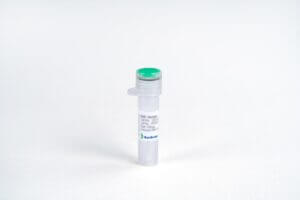
PTH (1-84aa), Human
$50.03 Add to cart View Product DetailsParathyroid Hormone (PTH) is the most important endocrine regulator of calcium and phosphorus con- centration in extracellular fluid. Parathyroid Hormone (PTH) is secreted from cells of the parathyroid glands and finds Parathyroid Hormone’s major target cells in bone and kidney. Like most other protein hormones, Parathyroid Hormone (PTH) is synthesized as a preprohormone. After intracellular processing, the mature hormone is packaged within the Golgi into secretory vesicles, the secreted into blood by exocytosis. Parathyroid Hormone (PTH) is secreted as a linear protein of 84 amino acids. Recombinant Human Parathyroid Hormone (PTH) produced in E. coli is a single, non-glycosylated, polypeptide chain containing 84 amino acids.
-

PTH (7-34aa), Human
$1,138.50 Add to cart View Product DetailsPolypeptide hormones secreted by the parathyroid glands, which promote release of calcium from bone to extracellular fluid by activating osteoblasts and inhibiting osteoclasts, indirectly promote increased intestinal absorption of calcium, and promote renal tubular reabsorption of calcium and increased renal excretion of phosphates. It is a major regulator of bone metabolism. Secretion of parathyroid hormone increases when the level of calcium in the extracellular fluid is low. Its action is opposed by calcitonin.
-

PTH (7-34aa), Human
$232.88 Add to cart View Product DetailsPolypeptide hormones secreted by the parathyroid glands, which promote release of calcium from bone to extracellular fluid by activating osteoblasts and inhibiting osteoclasts, indirectly promote increased intestinal absorption of calcium, and promote renal tubular reabsorption of calcium and increased renal excretion of phosphates. It is a major regulator of bone metabolism. Secretion of parathyroid hormone increases when the level of calcium in the extracellular fluid is low. Its action is opposed by calcitonin.
-

PTH (8H4HC)
$319.13 Add to cart View Product Detailsbeta test product of PTH Antibody (8H4HC)
-

PTH (8H4HC)
$3,191.25 Add to cart View Product Detailsbeta test product of PTH Antibody (8H4HC)
-
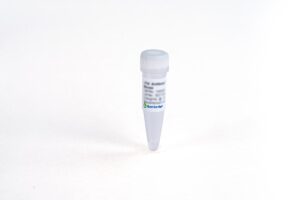
PTH (8H4HC)
$27,152.36 Add to cart View Product Detailsbeta test product of PTH Antibody (8H4HC)
-

PTH (NT7HC)
$319.13 Add to cart View Product Detailsbeta test product of PTH Antibody (NT7HC)
-

PTH (NT7HC)
$3,191.25 Add to cart View Product Detailsbeta test product of PTH Antibody (NT7HC)
-

PTH (NT7HC)
$27,152.36 Add to cart View Product Detailsbeta test product of PTH Antibody (NT7HC)
-

PTH Antibody (M18-3), mAb, Mouse
$319.13 Add to cart View Product DetailsParathyroid
hormone (PTH) is synthesized by the parathyroid glands and secreted into the
blood stream. Intact PTH is a single polypeptide containing 84 amino acids.
PTH, which plays an important role in maintaining calcium homeostasis, is a
useful biomarker in the diagnosis of calcium related disorders. -

PTH Antibody (M18-3), mAb, Mouse
$3,191.25 Add to cart View Product DetailsParathyroid
hormone (PTH) is synthesized by the parathyroid glands and secreted into the
blood stream. Intact PTH is a single polypeptide containing 84 amino acids.
PTH, which plays an important role in maintaining calcium homeostasis, is a
useful biomarker in the diagnosis of calcium related disorders. -

PTH Antibody (M18-3), mAb, Mouse
$27,152.36 Add to cart View Product DetailsParathyroid
hormone (PTH) is synthesized by the parathyroid glands and secreted into the
blood stream. Intact PTH is a single polypeptide containing 84 amino acids.
PTH, which plays an important role in maintaining calcium homeostasis, is a
useful biomarker in the diagnosis of calcium related disorders. -

PTH Antibody (NT7M), mAb, Mouse
$319.13 Add to cart View Product DetailsParathyroid
hormone (PTH) is synthesized by the parathyroid glands and secreted into the
blood stream. Intact PTH is a single polypeptide containing 84 amino acids.
PTH, which plays an important role in maintaining calcium homeostasis, is a
useful biomarker in the diagnosis of calcium related disorders. -

PTH Antibody (NT7M), mAb, Mouse
$3,191.25 Add to cart View Product DetailsParathyroid
hormone (PTH) is synthesized by the parathyroid glands and secreted into the
blood stream. Intact PTH is a single polypeptide containing 84 amino acids.
PTH, which plays an important role in maintaining calcium homeostasis, is a
useful biomarker in the diagnosis of calcium related disorders. -
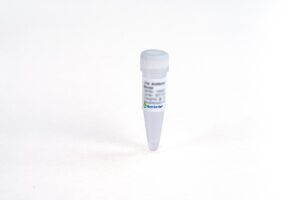
PTH Antibody (NT7M), mAb, Mouse
$27,152.36 Add to cart View Product DetailsParathyroid
hormone (PTH) is synthesized by the parathyroid glands and secreted into the
blood stream. Intact PTH is a single polypeptide containing 84 amino acids.
PTH, which plays an important role in maintaining calcium homeostasis, is a
useful biomarker in the diagnosis of calcium related disorders. -

pUC18 plasmid DNA
$43.13 Add to cart View Product DetailspUC18 is a plasmid cloning vector commonly used with E. coli. The vector length is 2686 bp and is isolated from E. coli strain DH5α by standard procedures.
-

pUC57 plasmid DNA
$43.13 Add to cart View Product DetailspUC57 is a common used plasmid cloning vector in E. coli. The vector length is 2,710 bp and is isolated from E. coli strain DH5α by standard procedures.
Note:Supplied in lyophilized form. -
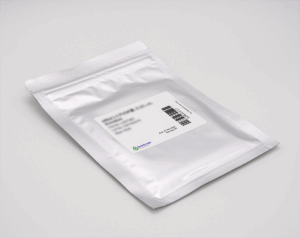
PVDF Membrane, 0.22 μm, 8cmx9cm
$117.30 Add to cart View Product DetailsPrecut polyvinylidene
difluoride (PVDF) membrane (8cm x 9cm) with 0.22 µm pore–size.
PVDF membrane is
ideal for western blotting applications as well as
for amino acid analysis and protein sequencing of small amounts of proteins. In
addition, PVDF membranes are durable and can be stripped and reprobed without a
loss of sensitivity or increased background.
PVDF membranes must
be pre-wetted with methanol or ethanol prior to submersion in PVDF equilibrium
buffer. -

PVR/CD155 Fc Chimera, Human
$1,035.00 Add to cart View Product DetailsPVR is a Type I transmembrane glycoprotein in the immunoglobulin superfamily. Commonly known as Poliovirus Receptor (PVR) due to its involvement in the cellular poliovirus infection in primates. PVR’s normal cellular function is in the establishment of intercellular adherens junctions between epithelial cells. PVR/CD155 was originally isolated based on its ability to mediate polio virus attachment to host cells. The full length (or PVR alpha isoform) is synthesized as a 417 amino acid (aa) precursor that contains a 20aa signal sequence, a 323aa extracellular region, a 24aa TM segment and a 50aa cytoplasmic tail. PVR binds other molecules including Vitronectin, Nectin-3, DNAM-1/CD226, CD96, and TIGIT but does not bind homotypically. PVR is up-regulated on endothelial cells by IFN-gamma and is highly expressed on immature thymocytes, lymph node dendritic cells, and tumor cells of epithelial and neuronal origin.
-

PVR/CD155 Fc Chimera, Human
$215.63 Add to cart View Product DetailsPVR is a Type I transmembrane glycoprotein in the immunoglobulin superfamily. Commonly known as Poliovirus Receptor (PVR) due to its involvement in the cellular poliovirus infection in primates. PVR’s normal cellular function is in the establishment of intercellular adherens junctions between epithelial cells. PVR/CD155 was originally isolated based on its ability to mediate polio virus attachment to host cells. The full length (or PVR alpha isoform) is synthesized as a 417 amino acid (aa) precursor that contains a 20aa signal sequence, a 323aa extracellular region, a 24aa TM segment and a 50aa cytoplasmic tail. PVR binds other molecules including Vitronectin, Nectin-3, DNAM-1/CD226, CD96, and TIGIT but does not bind homotypically. PVR is up-regulated on endothelial cells by IFN-gamma and is highly expressed on immature thymocytes, lymph node dendritic cells, and tumor cells of epithelial and neuronal origin.
-

Rabbit IgG Control (Whole Molecule), Purified
$70.73 Add to cart View Product DetailsGenScript Purified Rabbit IgG (Whole Molecule) Control is highly purified from normal rabbit serum by Protein G chromatography.GenScript Purified Rabbit IgG (Whole Molecule) Control is suitable for use as control, standard, blocking agent, or coating protein in a variety of assays, including ELISA, immunobloting (Dot blot and Western blot), immunoprecipitation, immunodiffusion, and immunoelectrophoresis.It also may be used as antigen or ligand in immunochemical reactions and conjugations.
-

RANTES/CCL5, Human
$2,190.75 Add to cart View Product DetailsCCL5 or RANTES (acronym for Regulated upon Activation, Normal T cell Expressed and presumably Secreted), was initially discovered by subtractive hybridization as a transcript expressed in T cells but not B cells. Eosinophilchemotactic activities released by thrombinstimulated human platelets have also been purified and found to be identical to RANTES. Besides T cells and platelets, RANTES has been reported to be produced by renal tubular epithelium, synovial fibroblasts and selected tumor cells.
-

RANTES/CCL5, Human
$163.88 Add to cart View Product DetailsCCL5 or RANTES (acronym for Regulated upon Activation, Normal T cell Expressed and presumably Secreted), was initially discovered by subtractive hybridization as a transcript expressed in T cells but not B cells. Eosinophilchemotactic activities released by thrombinstimulated human platelets have also been purified and found to be identical to RANTES. Besides T cells and platelets, RANTES has been reported to be produced by renal tubular epithelium, synovial fibroblasts and selected tumor cells.
-

RANTES/CCL5, Human(HEK 293-expressed)
$86.25 Add to cart View Product DetailsChemokine (C-C motif) ligand 5(CCL5), also known as RANTES (Regulated upon activation, Normal T cell Expressed and presumable Secreted) is a CC-chemokine that can signal through the CCR1, CCR3, CCR5 and US28 (cytomegalovirus receptor) receptors. RANTES is chemotactic for T cells, eosinophils, and basophils, and plays an active role in recruiting leukocytes in inflammatory sites. With the help of specific cytokines (i.e., IL-2 and IFN-γ) that are released by T cells, RANTES induces the proliferation and activation of certain natural-killer (NK) cells to form CHAK (CC-Chemokine-activated killer) cells. RANTES is also an HIV-suppressive factor released from CD8+ T cells. This chemokine has been localized to chromosome 17 in humans. It has the capability to inhibit certain strains of HIV-1, HIV-2 and simian immunodeficiency virus (SIV).
-

RANTES/CCL5, Human(HEK 293-expressed)
$43.13 Add to cart View Product DetailsChemokine (C-C motif) ligand 5(CCL5), also known as RANTES (Regulated upon activation, Normal T cell Expressed and presumable Secreted) is a CC-chemokine that can signal through the CCR1, CCR3, CCR5 and US28 (cytomegalovirus receptor) receptors. RANTES is chemotactic for T cells, eosinophils, and basophils, and plays an active role in recruiting leukocytes in inflammatory sites. With the help of specific cytokines (i.e., IL-2 and IFN-γ) that are released by T cells, RANTES induces the proliferation and activation of certain natural-killer (NK) cells to form CHAK (CC-Chemokine-activated killer) cells. RANTES is also an HIV-suppressive factor released from CD8+ T cells. This chemokine has been localized to chromosome 17 in humans. It has the capability to inhibit certain strains of HIV-1, HIV-2 and simian immunodeficiency virus (SIV).
-
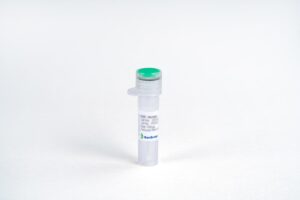
RBP4, His, Human
$2,018.25 Add to cart View Product DetailsThe properties of retinol binding protein is the transport carrier of vitamin A in the plasma. Human-retinol binding protein is a single-chain polypeptide with a molecular weight of approximately 21000 and one binding site for retinol and other forms of vitamin A. In addition, compounds related to retinol, such as retinal, retinoic acid, retinyl esters and geometric isomers of retinol and of retinal were evaluated for their ability to bind to this protein. In plasma, RBP4-retinol forms a complex with transthyretin (TTR), also known as thyroxine-binding protein and prealbumin. Defects in RBP4 cause retinol-binding protein deficiency, which affects night vision.
-

RBP4, His, Human
$63.83 Add to cart View Product DetailsThe properties of retinol binding protein is the transport carrier of vitamin A in the plasma. Human-retinol binding protein is a single-chain polypeptide with a molecular weight of approximately 21000 and one binding site for retinol and other forms of vitamin A. In addition, compounds related to retinol, such as retinal, retinoic acid, retinyl esters and geometric isomers of retinol and of retinal were evaluated for their ability to bind to this protein. In plasma, RBP4-retinol forms a complex with transthyretin (TTR), also known as thyroxine-binding protein and prealbumin. Defects in RBP4 cause retinol-binding protein deficiency, which affects night vision.
-

RBP4, His, Human
$155.25 Add to cart View Product DetailsThe properties of retinol binding protein is the transport carrier of vitamin A in the plasma. Human-retinol binding protein is a single-chain polypeptide with a molecular weight of approximately 21000 and one binding site for retinol and other forms of vitamin A. In addition, compounds related to retinol, such as retinal, retinoic acid, retinyl esters and geometric isomers of retinol and of retinal were evaluated for their ability to bind to this protein. In plasma, RBP4-retinol forms a complex with transthyretin (TTR), also known as thyroxine-binding protein and prealbumin. Defects in RBP4 cause retinol-binding protein deficiency, which affects night vision.
-

Recombinant PIVKA II Antigen
$404.51 Add to cart View Product DetailsProtein Induced by Vitamin K Absence or Antagonist-II (PIVKA-II), also known as Des-γ-carboxy-prothrombin (DCP), is an abnormal form of prothrombin. Normally, the prothrombin’s 10 glutamic acid residues (Glu) in the γ-carboxyglutamic acid (Gla) domain at positions 6, 7, 14, 16, 19, 20,25, 26, 29 and 32 are γ-carboxylated to Gla by vitamin-K dependent γ- glutamyl carboxylase in the liver and then secreted into plasma. In patients with hepatocellular carcinoma (HCC), γ-carboxylation of prothrombin is impaired so that PIVKA-II is formed instead of prothrombin. PIVKA-II is considered as is an efficient biomarker specific for HCC.
-

Recombinant PIVKA II Antigen
$809.89 Add to cart View Product DetailsProtein Induced by Vitamin K Absence or Antagonist-II (PIVKA-II), also known as Des-γ-carboxy-prothrombin (DCP), is an abnormal form of prothrombin. Normally, the prothrombin’s 10 glutamic acid residues (Glu) in the γ-carboxyglutamic acid (Gla) domain at positions 6, 7, 14, 16, 19, 20,25, 26, 29 and 32 are γ-carboxylated to Gla by vitamin-K dependent γ- glutamyl carboxylase in the liver and then secreted into plasma. In patients with hepatocellular carcinoma (HCC), γ-carboxylation of prothrombin is impaired so that PIVKA-II is formed instead of prothrombin. PIVKA-II is considered as is an efficient biomarker specific for HCC.
-

Recombinant PIVKA II Antigen
$8,098.88 Add to cart View Product DetailsProtein Induced by Vitamin K Absence or Antagonist-II (PIVKA-II), also known as Des-γ-carboxy-prothrombin (DCP), is an abnormal form of prothrombin. Normally, the prothrombin’s 10 glutamic acid residues (Glu) in the γ-carboxyglutamic acid (Gla) domain at positions 6, 7, 14, 16, 19, 20,25, 26, 29 and 32 are γ-carboxylated to Gla by vitamin-K dependent γ- glutamyl carboxylase in the liver and then secreted into plasma. In patients with hepatocellular carcinoma (HCC), γ-carboxylation of prothrombin is impaired so that PIVKA-II is formed instead of prothrombin. PIVKA-II is considered as is an efficient biomarker specific for HCC.
-
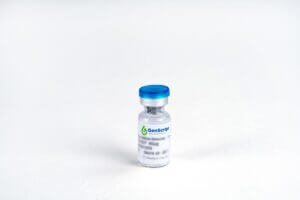
RFP-tag Antibody, pAb, Rabbit
$87.98 Add to cart View Product DetailsGenScript RFP-tag Antibody, pAb, Rabbit specifically reacts with fusion proteins containing RFP-tags and RFP variants, such as mCherry, tdTomato, DsRed, DsRed2, mOrange.The antibody does not react with GFP or GFP-tagged proteins.
-

RH7777/EDG4 Stable Cell Line
$7,331.25 Add to cart View Product DetailsLysophosphatidic acid (LPA), a bioactive lipid produced by several cell types including postmitotic neurons and activated platelets, is thought to be involved in various biological processes, including brain development. Three cognate G-protein coupled receptors encoded by lpa(1)/lp(A1)/Edg-2/Gpcr26, lpa(2)/lp(A2)/Edg-4, and lpa(3)/lp(A3)/Edg-7 mediate the cellular effects of LPA. However, many LPA-induced responses, including phospholipase C activation, Ca2+ mobilization, adenylyl cyclase activation, proliferation, JNK activation, AKT activation, and stress fiber formation, were absent or severely reduced in embryonic fibroblasts derived from lpa(1)(-/-) lpa(2)(-/-) mice. The lysophosphatidic acid receptor LPA2 or endothelial differentiation, G-protein coupled receptor 4(EDG-4) is expressed most abundantly in testes and peripheral blood leukocytes. It is reported to be a distinctive functional marker for ovarian carcinoma.
-

Roller for eBlot
$41.40 Add to cart View Product DetailsRoller for eBlot
-

ROR1, hFc, Human
$1,293.75 Add to cart View Product DetailsROR1 (Receptor tyrosine kinase-like orphan receptor 1), also known as neurotrophic tyrosine kinase receptor-related 1 (NTRKR1), is a member of the ROR family within the receptor tyrosine kinases (RTK) superfamily. Two ROR family members (ROR1 and ROR2) have been identified and are characterized by the intracellular tyrosine kinase domains, highly related to those of the Trk-family receptor tyrosine kinases, and by the extracellular Frizzled-like cysteine-rich domains and kringle domains, which are common to receptors of the Wnt family members.
-

ROR1, hFc, Human
$189.75 Add to cart View Product DetailsROR1 (Receptor tyrosine kinase-like orphan receptor 1), also known as neurotrophic tyrosine kinase receptor-related 1 (NTRKR1), is a member of the ROR family within the receptor tyrosine kinases (RTK) superfamily. Two ROR family members (ROR1 and ROR2) have been identified and are characterized by the intracellular tyrosine kinase domains, highly related to those of the Trk-family receptor tyrosine kinases, and by the extracellular Frizzled-like cysteine-rich domains and kringle domains, which are common to receptors of the Wnt family members.
-
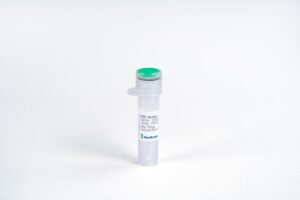
RSPO1, His, Human
$2,596.13 Add to cart View Product DetailsRSPO1 is a secreted protein, containing 2 FU(furin-like) repeats and 1 TSP type-1 domain and belonging to the R-spondin family. RSPO1 is required for the early development of gonads, regardless of sex. It has been found in mice only eleven days after fertilization. To induce cell proliferation, it acts synergistically with WNT4. They help stabilize β catenin, which activates downstream targets. RSPO1 is necessary in female sex development. It augments the WNT/β catenin pathway to oppose male sex development. In critical gonadal stages, between six and nine weeks after fertilization, the ovaries upregulate it while the testes downregulate it. RSPO1 can potentially aid in the treatment of mucositis, which is characterized by inflammation of the oral cavity. This unfortunate condition often accompanies chemotherapy and radiation in cancer patients with head and neck tumors.
-

RSPO1, His, Human
$155.25 Add to cart View Product DetailsRSPO1 is a secreted protein, containing 2 FU(furin-like) repeats and 1 TSP type-1 domain and belonging to the R-spondin family. RSPO1 is required for the early development of gonads, regardless of sex. It has been found in mice only eleven days after fertilization. To induce cell proliferation, it acts synergistically with WNT4. They help stabilize β catenin, which activates downstream targets. RSPO1 is necessary in female sex development. It augments the WNT/β catenin pathway to oppose male sex development. In critical gonadal stages, between six and nine weeks after fertilization, the ovaries upregulate it while the testes downregulate it. RSPO1 can potentially aid in the treatment of mucositis, which is characterized by inflammation of the oral cavity. This unfortunate condition often accompanies chemotherapy and radiation in cancer patients with head and neck tumors.
-

RSPO1, His, Human
$452.81 Add to cart View Product DetailsRSPO1 is a secreted protein, containing 2 FU(furin-like) repeats and 1 TSP type-1 domain and belonging to the R-spondin family. RSPO1 is required for the early development of gonads, regardless of sex. It has been found in mice only eleven days after fertilization. To induce cell proliferation, it acts synergistically with WNT4. They help stabilize β catenin, which activates downstream targets. RSPO1 is necessary in female sex development. It augments the WNT/β catenin pathway to oppose male sex development. In critical gonadal stages, between six and nine weeks after fertilization, the ovaries upregulate it while the testes downregulate it. RSPO1 can potentially aid in the treatment of mucositis, which is characterized by inflammation of the oral cavity. This unfortunate condition often accompanies chemotherapy and radiation in cancer patients with head and neck tumors.
-

S1-tag Antibody, pAb, Rabbit
$87.98 Add to cart View Product DetailsThis Antibody recognizes both S1 tagged fusion proteins.
